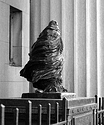kept
Member
Hello, everyone! I'm new to this forum and new to the bromoil process.
I wanted to ask are there any possibilities of avoiding potassium dichromate in the bleaching solution preparation? Maybe there are some alternative recipes for this solution? Because it's difficult to obtain it in Lithuania because of its toxicity.
Cheers!
I wanted to ask are there any possibilities of avoiding potassium dichromate in the bleaching solution preparation? Maybe there are some alternative recipes for this solution? Because it's difficult to obtain it in Lithuania because of its toxicity.
Cheers!
Last edited by a moderator:






